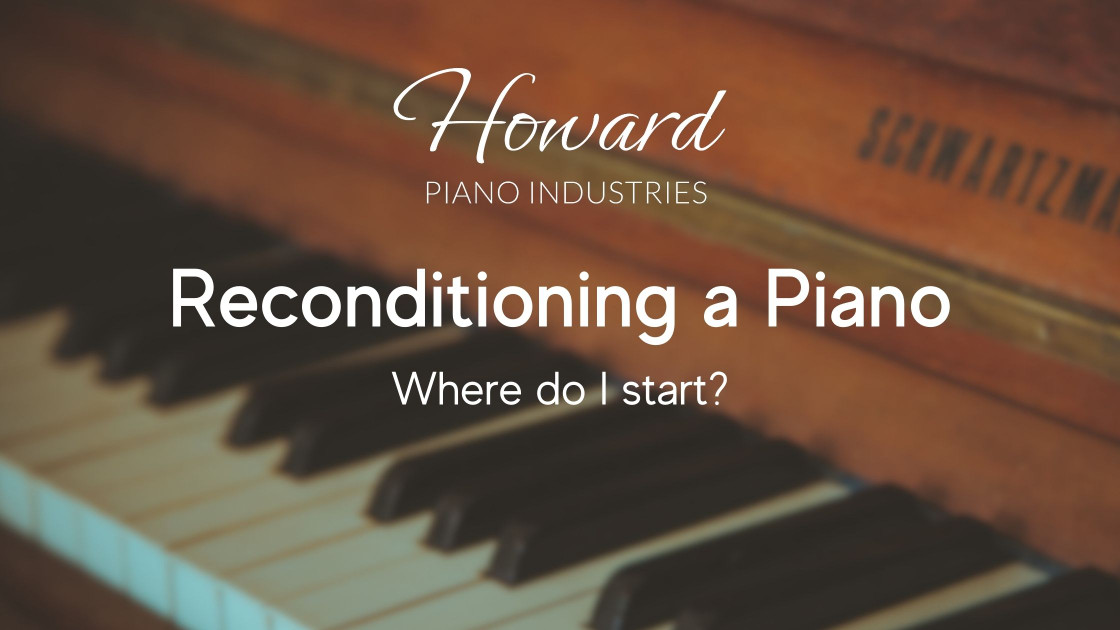I Want to Recondition My Piano, but Where Do I Start?
Nov 30, 2023
So, you have a piano that may need some sprucing up. There are some things that can be done without going into a full restoration. The first step would be to evaluate the different parts of the piano to determine what needs attention. The different overall areas to consider are:
- The structure of the piano
- The condition of the case
- The overall condition of the action parts, felts, and strings
When inspecting the structure of the piano, you want to consider if there is structural damage to the piano, which would require extensive structural repairs for the piano to be put into good working condition. This would include things such as inspecting the bridges, soundboard, and frame of the piano. It would also include determining if the pinblock was in good condition so the tuning pins will hold their pitch. If there are large cracks in the soundboard that create buzzes, then repairing this is necessary. If there are cracks in the bridges or the bridges are separating from the soundboard, the piano may have a difficult time staying in tune as well as the fact that these problems could create buzzing sounds also. You will want to inspect the frame of the piano to see if there are any major cracks or separations. To check the tuning pins for tightness, you may need to check several of the pins with a torque wrench if you are not able to tell by feel how tight the pins are. If the tuning pins are too loose, this could be an indication that there are cracks in the pinblock, or it might just be that the wood of the pinblock has aged to the point where the tuning pin holes are too enlarged for the pins.
Considering the condition of the cabinet or case of the piano is also something to be aware of. If there are a lot of scratches in the finish or if the finish has become overly dulled through the years, you will want to consider if some refinishing needs to be done. This can be a fairly big job and if you have to pay someone to do this job it can be fairly expensive. It is not unusual for the refinishing itself to cost $2000-$3000 or more in some cases. If you decide that you want to do the refinishing work yourself, you will want to make sure that you remove all of the parts of the piano that can be removed in order to do a proper job.
The biggest decision that you will have to make is which of the inner working parts you want to replace or rebuild. Some of the easier parts to replace are felts and leather parts in the action and keys. These parts also are relatively affordable to replace. When you are looking at replacing the more major parts of the piano (such as the hammers and strings), the costs can go quite a bit higher. Here is a list of the various felts that typically are replaced when reconditioning the action:
- Front rail and balance rail felts and punchings
- Backrail cloth
- Key bushings
- Hammer rail cloth
- Spring rail felt
- Regulating punchings
- Spring punchings
- Backcheck felt and leather
- Grand damper lifter felts (grands only)
- Action cloth for the bottom of the whippens and the damper levers
- Damper felts
- Hammer butt felt and leather
- Felt around the pedal box
There are a few other items that are typically replaced that will be worn from age on an older piano. Here is a list of other items that should be replaced:
- Bridle straps
- Jack springs
- Hammer rail springs
- Damper lever springs
In many cases the wood action parts do not need to be replaced but can instead just be cleaned up as you go through and replace the various felts and other parts. If the wood parts are deteriorated from being kept in a bad environment over the years, these parts may need to be replaced, but you will have to analyze the cost as these parts can get to be more costly than the felts and other items.
One of the most common things that typically need attention is the pinning in all of the action centers. This will have a huge effect on how well the piano plays, as flange centers that have pinning that is too tight or too loose will greatly affect the playability of the piano. The various action centers include the jack flange, hammer flange, whippen flange and in a grand action you also have the repetition lever pinning. If you have a taller upright with stickers, these will have their own flanges that may need to be addressed as well.

